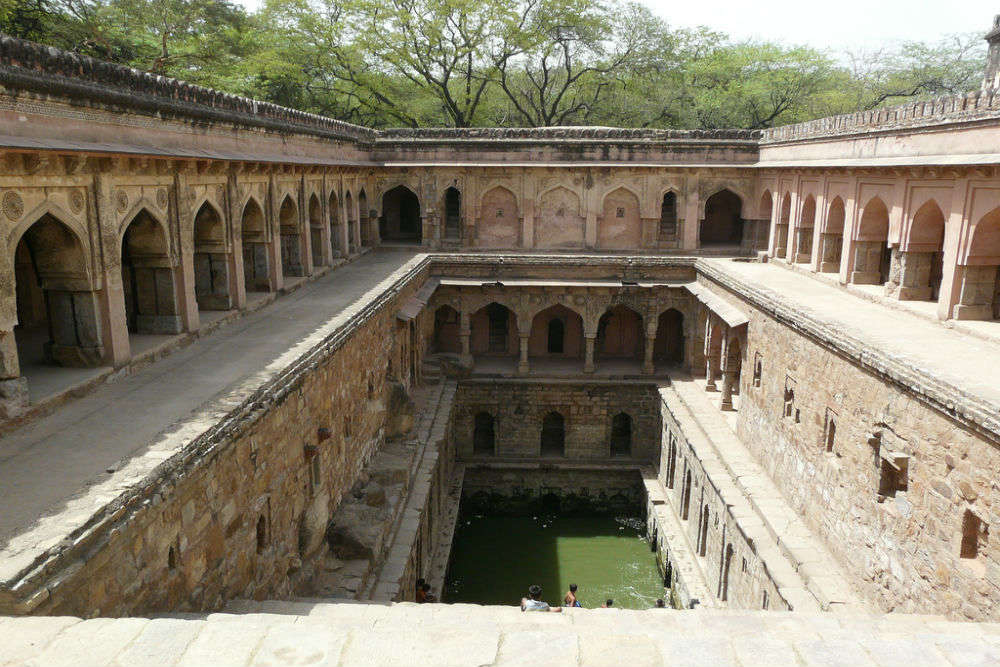Context
-
Mehrauli is the oldest inhabited area of what we call Delhi. Little more than an urban village today, Mehrauli has survived and thrived over the years as a spiritual centre, a trading post, a wholesale market and now, as a destination housing multiple high-end boutiques.
The seven cities of Delhi
- What we today know as Purani Dilli (Old Delhi) is actually a misnomer.
- The city’s history far predates Shahjahanabad, with the oldest evidence of habitation – painted grey ware fragments found in Purana Quila – dating back to the Iron Age (circa 1100-800 BC).
Photo Courtesy: Times of India - Historians identify seven cities of Delhi, dating from the 11th century onwards: Lalkot/Quila Rai Pithora/Mehrauli, Siri, Tughlaqabad, Firozabad, Shergarh (present-day Old Fort), Shahjahanabad and New Delhi. Depending on how one counts and what one considers ‘a city’, this number can be as high as 11.
- Mehrauli is widely considered to be the oldest ‘city’ of Delhi and is the oldest area of the metropolis to be continuously inhabited.
Repeated building activities
- Like any city, Mehrauli has witnessed multiple cycles of building and rebuilding over the centuries.
- First founded as Lalkot in the 11th century by Anangpal II, a ruler of the Rajput Tomar dynasty, remains of the earliest version of the city can be found around Sanjay Van and the Qutab Golf Course.
- This was later christened ‘Quila Rai Pithora’ by Mughal court historian Abu’l Fazl in his epic hagiography, ‘Ain-i-Akbari’.
- This city passed hands from the Tomars to the Chauhans, who are credited to have further fortified the complex.
- The city fell into the hands of the Mamluk dynasty (Slave dynasty) in 1192.
- Under ruler Qutubudin Aibak, the first ruler of the Slave dynasty, the next round of construction began in the area. Notably, he began the building of the Qutub Minar to commemorate his victory (though other explanations also exist to his motivations) as well as the Quwwat-al-Islam (Might of Islam) mosque, the oldest known mosque in north India (India’s oldest mosque – Cheraman Juma – was built by Arab merchants in Kerala).
- In the next century, a slew of building activities took place in the region with tombs, baolis (step wells), palaces and other fortifications built in the reigns of Iltutmish, Razia Sultan and Alauddin Khilji.
Continued relevance and inhabitation
- Even as the newer cities came up and the seat of power shifted northwards, Mehrauli witnessed building activity as late as the Mughal and British periods.
- Due to its location on the lap of the Aravallis hills, the area was preferred as a summer retreat.
- Two Mughal summer palaces (Zafar Mahal and Jahaz Mahal) and a summer abode of Sir Thomas Metcalfe (Dilkhusha) are situated here.
- Mehrauli lay on a historic trade route, as the number of sarais (Ladho Sarai, Ber Sarai, Neb Sarai) around the area would suggest. A sarai was a resthouse for weary travellers.
- In ‘Atlas of the Mughal Empire’, historian Irfan Habib writes that the area would have been along the trading route connecting Bara Pullah (a Mughal-era bridge in Delhi) to Pataudi, Rewari and Narnaul (in present-day Haryana).
- Sultan Jalaluddin Khilji’s (1290-1296) contribution to building the bazaar (market) in Mehrauli. He settled the merchants within the walls — a grain market/mandi by Mandavi Darwaza of Mehrauli and a cloth market known as Sara-E-Adl near Badaun Gate. Both gates do not exist any longer.
- Sultan Jalaluddin Khilji’s (1290-1296) contribution to building the bazaar (market) in Mehrauli.
- He settled the merchants within the walls — a grain market/mandi by Mandavi Darwaza of Mehrauli and a cloth market known as Sara-E-Adl near Badaun Gate. Both gates do not exist any longer.
- A Madhi Masjid, earlier known as Mandiwali Masjid
- A major market stood adjacent to a mango tree near Chattewali gali (close to Adham Khan’s tomb), but as Mehrauli opened its arms to people, residential houses replaced the bazaar.
The cosmopolitanism of Mehrauli
- Mehrauli is also a spiritual centre, home to both Hindu and Muslim shrines. Sufi saint Hazrat Qutubuddin Bakhtiar Kaki (1173 -1235 AD) was buried in the city and his dargah remains popular till date, across religious lines. Some historians cite the dargah as a reason for the city surviving the test of time – despite power shifting elsewhere, the dargah remained a revered destination for pilgrims far and wide.
- Another spiritual centre for the community is the Yogmaya mandir, believed to be one of the oldest in the city. Yoginis (semi-divine deities) have been an integral part of Indian folklore and this temple dedicated to them is believed to have been constructed by the Pandavas.
- The cosmopolitan spirit and secular heritage of Mehrauli are perhaps best expressed in the annual community celebration of ‘Phool Walon ki Sair’ or Sair-e-Gulfaroshan (walk of the flowers). An offering of pankhas (large floral fans) is made to the Yogmaya Temple and a chadar is offered at the dargah of Khwaja Bakhtiyar Kaki.
Mehrauli pillar inscription
- The Mehrauli pillar inscription belongs to the period of the Guptas.
- The Mehrauli iron pillar inscription mentions Chandragupra Vikramaditya’s authority over northwestern India.
- This pillar was established by Chandragupta as Vishnupada in the honour of Lord Vishnu.
Source: IE
Visit Abhiyan PEDIA (One of the Most Followed / Recommended) for UPSC Revisions: Click Here
IAS Abhiyan is now on Telegram: Click on the Below link to Join our Channels to stay Updated
IAS Abhiyan Official: Click Here to Join
For UPSC Mains Value Edition (Facts, Quotes, Best Practices, Case Studies): Click Here to Join

